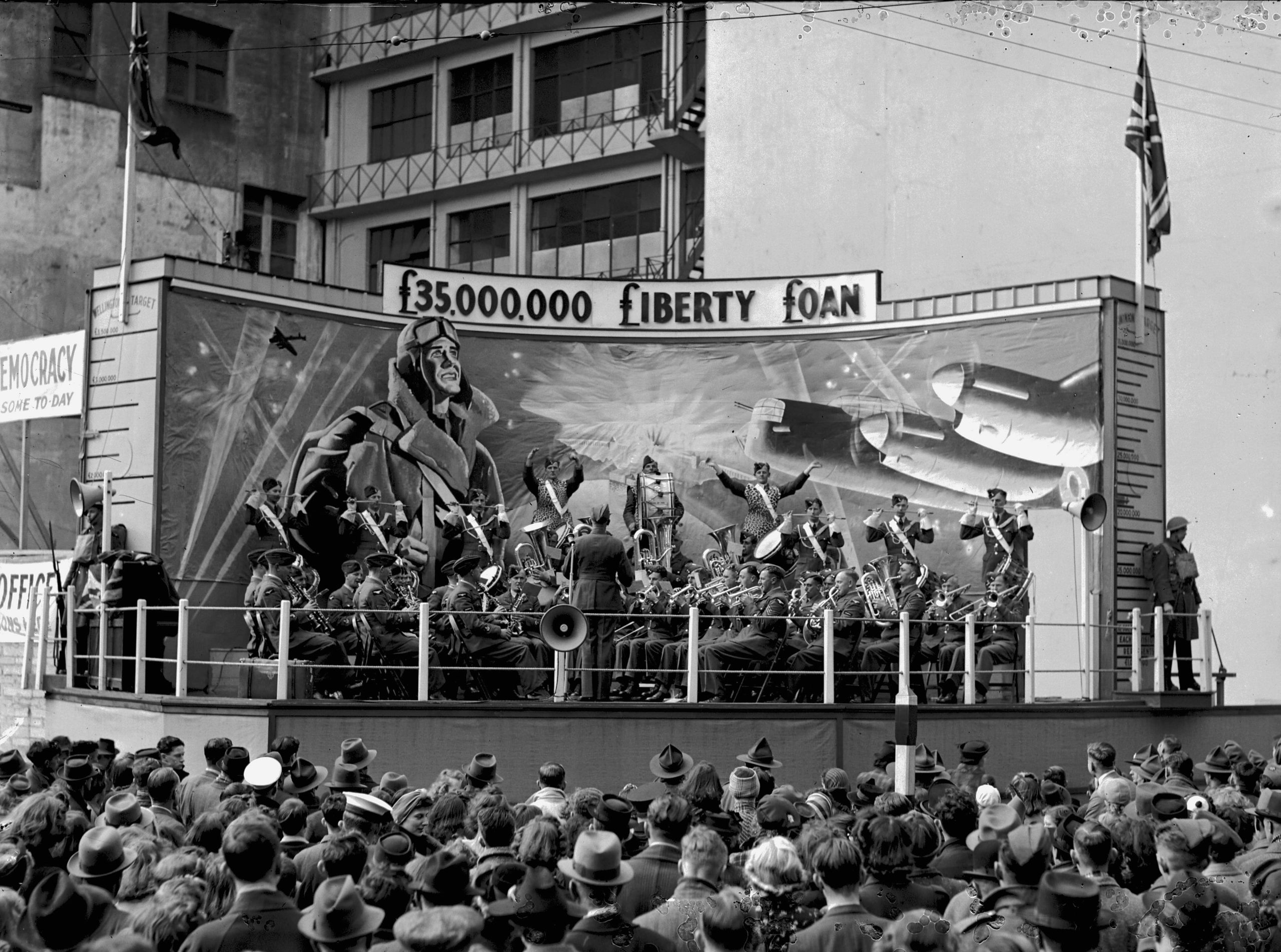New Zealanders took to the skies once again upon the outbreak of World War Two, but what of the musicians of the Royal New Zealand Air Force? From playing in the heat of the Pacific to wielding machine guns, read on to discover the story of the RNZAF Band at war.
Two years before the formation of the Royal New Zealand Air Force as an entity separate from the New Zealand Army, the Territorial Air Force Band was founded in 1935. After its inaugural performance, leading the Parade for the Coronation of King George VI through Wellington in May 1937, the band appeared in numerous parades and concerts.
With the outbreak of war in 1939, the need for a full-time band to assist in the war effort became apparent, and so, the Central Band of the Royal New Zealand Air Force was born.
Under the baton of Flight Lieutenant (later Squadron Leader) Herbert Gladstone Hill, the band rehearsed relentlessly at its new home base at RNZAF Station Rongotai, honing its musicianship and marching displays to an exceptional standard.
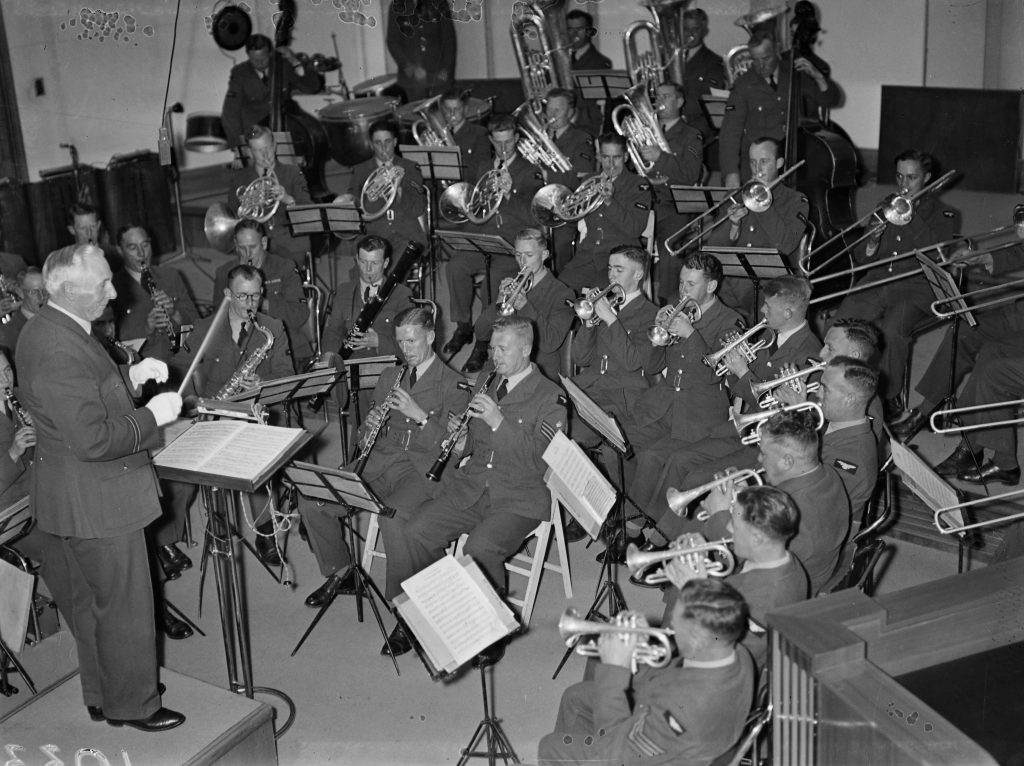
Frequent public appearances meant the band immediately gained popularity and a reputation throughout New Zealand for its high-quality performances. Following a flood of correspondence complementing the band the Air Secretary remarked: “It is needless for me to say that their visits throughout New Zealand have not only been a financial success but a wonderful stimulant to the morale of the people.”

Many strings in their bow
The RNZAF Band toured extensively throughout the war, performing the length of New Zealand many times over on ‘Patriotic Tours.’ During the first tour alone the band the band covered over 2500 miles, performed over 20 concerts, and marched in nearly 50 parades.

The Patriotic Tours helped the New Zealand Patriotic Organisation to raise over £170,000 during the war. Contact Magazine commented: “If music soothes the savage beast, the kind dispensed by the Royal New Zealand Air Force Band also sends the hands deep into pockets and purses.” (2008/432.2)
The band’s efforts did not go unnoticed overseas. While stationed in England, Pilot Office Bruce G. Johnston, an original drummer from the band, wrote to Director of Music Flight Lieutenant Gladstone Hill.
“Just a short line to let you know a bit about your work’s results over here… I find that the patriotic funds have been exceptionally good to us. Every now and then a nice parcel of tinned fruit or ‘cigs’ for us… While I was touring with the band, I never fully realised what happened with all the funds … and it cheers me to think that what I was doing in the band certainly was appreciated in this country when more and more parcels of food and ‘cigs,’ etc., arrived. It is surprising how unhappy one can get, and it’s the people at home that keep our spirits up.” (00/066.4BB)
The band contributed to many other successful fundraising initiatives. The band’s concerts in ‘Liberty Corner’ in central Wellington were a frequent event, supporting both recruitment and Liberty Loan (a government tax rate scheme) campaigns. Parades and concerts were given for the Heart-to-Heart Appeal and the Bonds for Bombers campaign, encouraging New Zealanders to purchase war bonds for the RNZAF’s acquisition of new bomber aircraft.
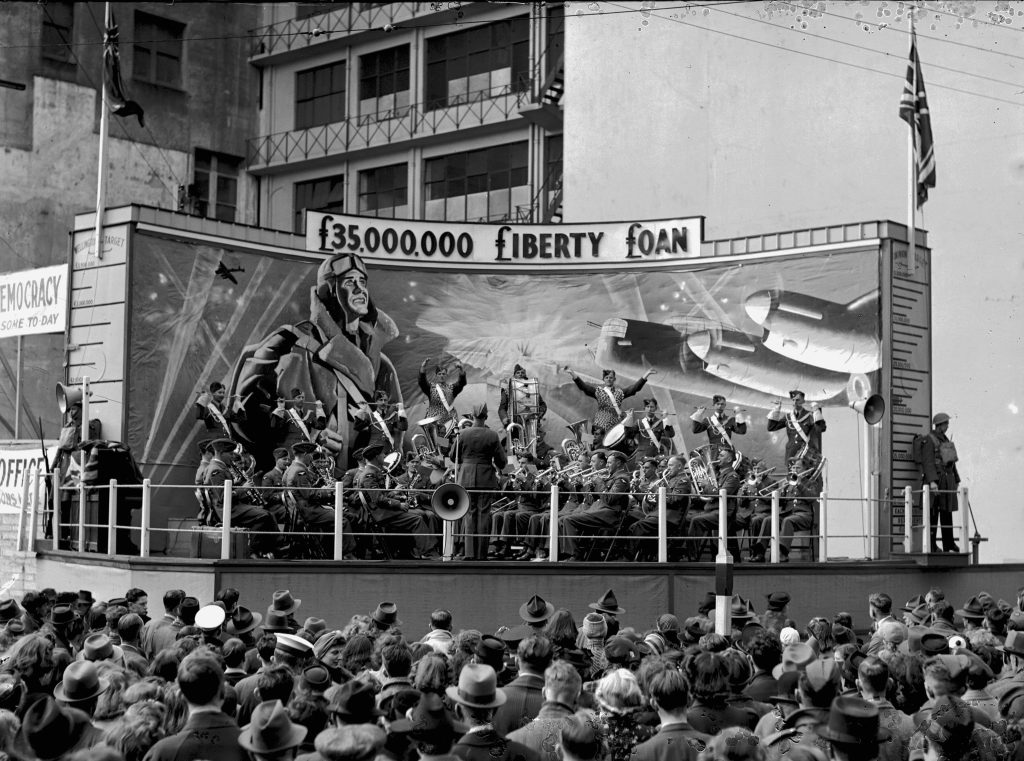
Band on the Pacific run
The band proved to be of huge value in boosting morale to New Zealanders overseas as well as at home. In 1944, the Auckland Star suggested: “Remembering the flyers and ground staffs of the RNZAF, cast away in the islands of the Pacific as they whittle down the air strength of Japan, would it not be a gesture of gratitude on the country’s part to send them, for a while, their own splendid band?”
Thus, the band was dispatched on a 14-week ‘goodwill’ tour to the Pacific, performing in Bougainville, New Caledonia, Tulagi, Guadalcanal, the Russell Islands, Espiritu Santos, and Fiji to both New Zealand and American servicemen stationed in the Pacific.

Playing 180 concerts in 75 days, the Pacific climate proved tough to keep the band members, and their instruments, in good working condition.
An average day saw the band travel 150 miles in stifling Pacific heat on dirt roads playing three to four concerts along the way.
However, in typical Kiwi fashion, the band rose to the occasion and the tour proved a great success.
Performing near the front line and to convalescing soldiers in field hospitals, the band raised the spirits of its audiences while also delivering an exceptional impression of New Zealand among the American servicemen.
A Commanding Officer of a United States Pacific Unit wrote: “The artistry with which the performance was planned, the expert showmanship with which it was presented, and the apparent enthusiasm and pleasure of the performers in their work combined to give it that indefinable quality that lifts a performance to the level of perfection. The rapt attention and enthusiastic applause given the band by everyone of the thousands of men in the audience expressed far better than I can our pleasure at being so admirably entertained.”
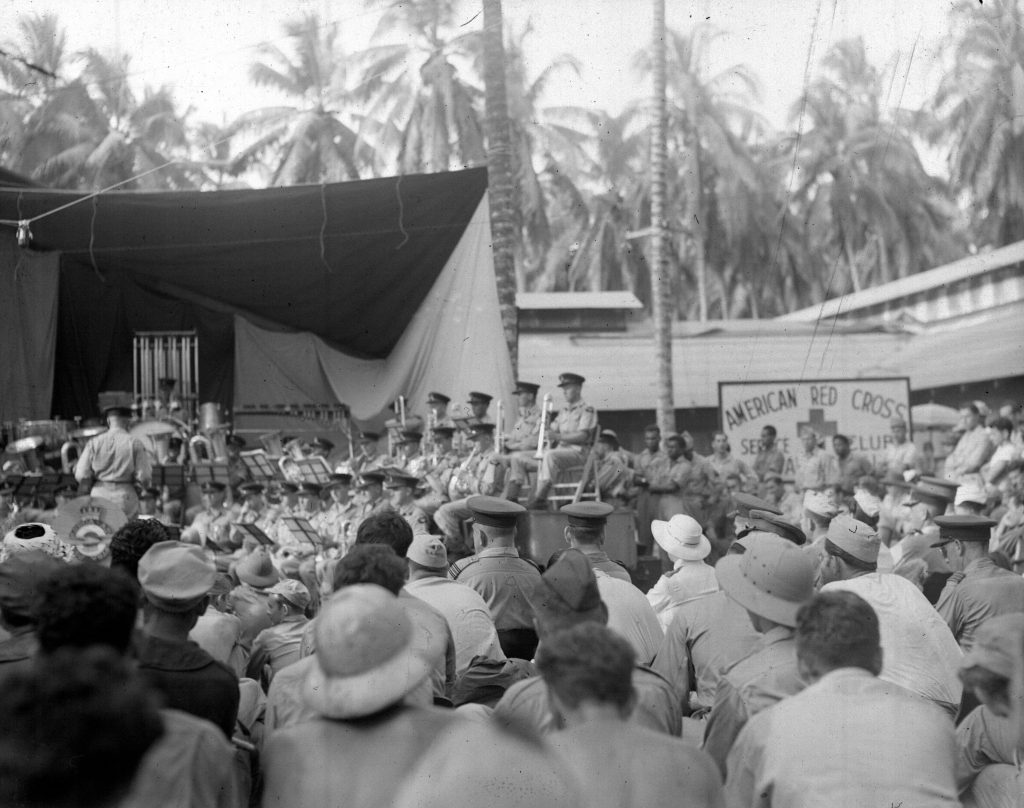
The Home Front
When at ‘home’ at RNZAF Station Rongotai and not rehearsing, the band transformed into an operative Airdrome Defence Unit. Trained in specialised defensive work by RNZAF airdrome defensive squadrons, the musicians carried out combatant duties equipped this time with instruments of war such as light anti-aircraft equipment, tommy guns and machine guns.
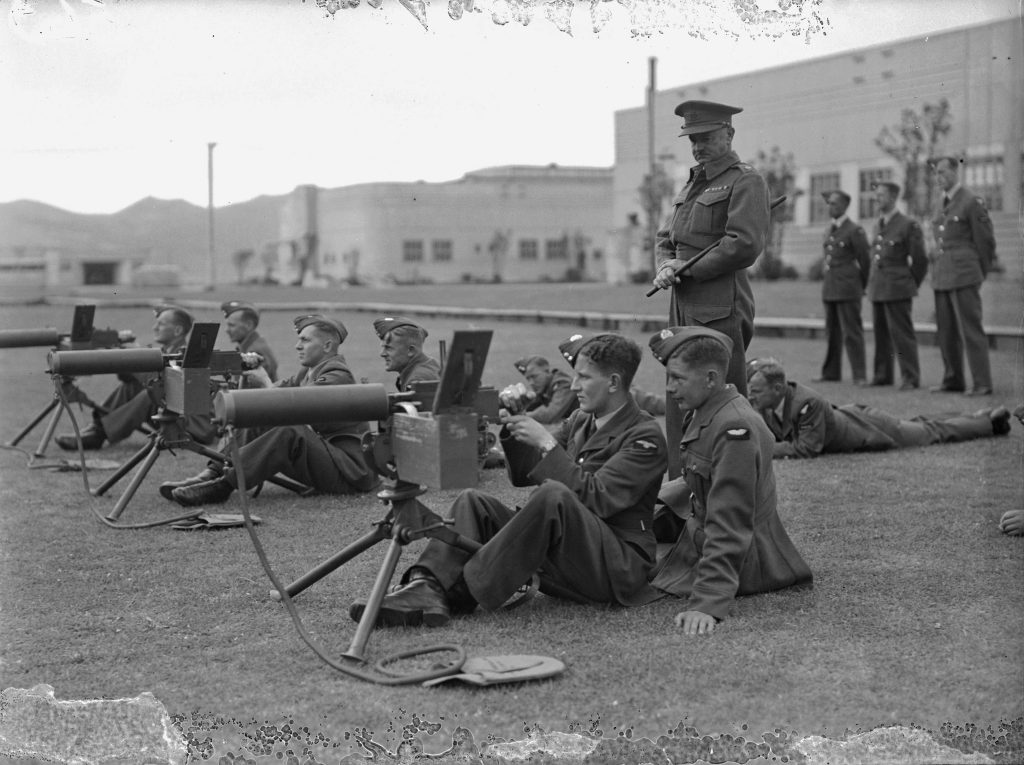
One Final Push
The band toured one last time in 1945 to Australia, in aid of the Australian Government’s Fourth Victory Loan Campaign. Sent by the New Zealand Government as a gesture of friendship, the by now exhausted musicians covered 4000 miles in four weeks to assist in raising the £85,000,000 of the Loan. The band was very well received, with one Australian newspaper remarking: “The concert was two hours of delightful entertainment, thoroughly enjoyed by a most appreciative audience, whose only regret was that the programme ended all too quickly.” (00/066.4BP)
Upon the band’s return from Australia in December 1945, with the war finally over, its members were demobilised, and the band disestablished.
However, it was the end of the story for our full-time band formed during the war.
The band was reformed again in 1951 as a reservist unit and has been maintaining regular service duties and delighting audiences in concert ever since.




